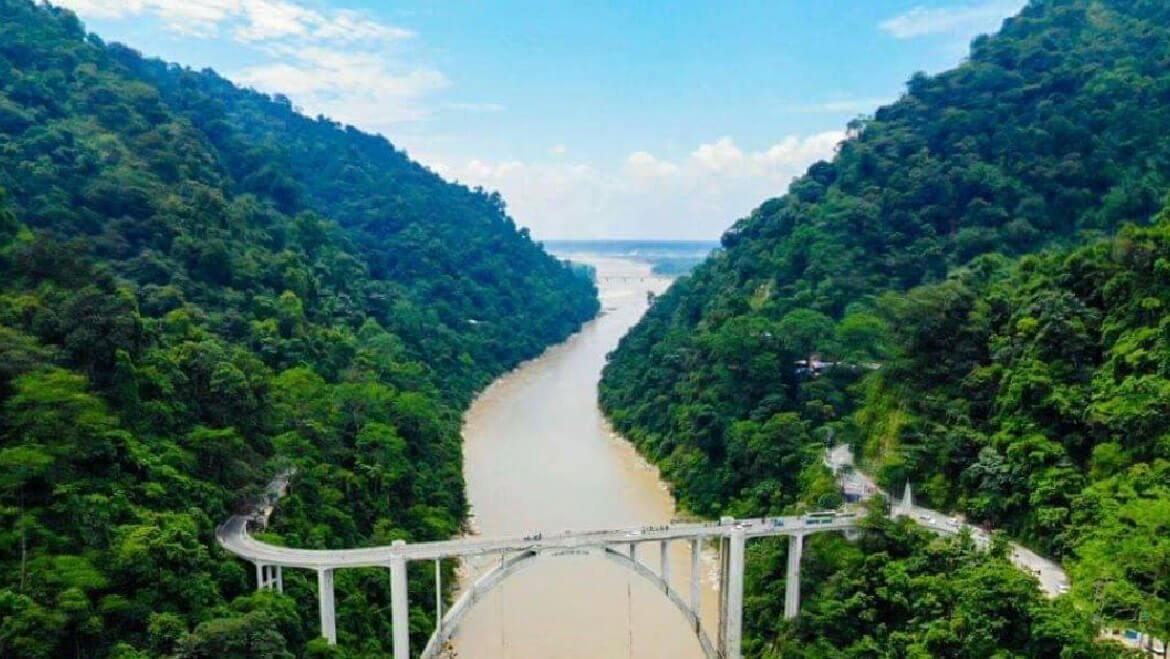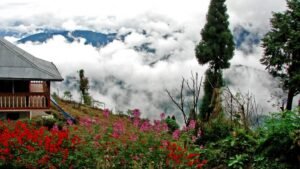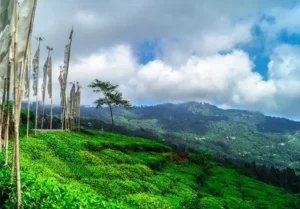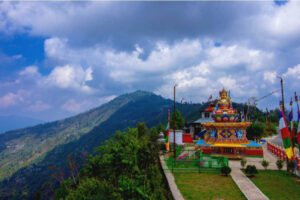
Siliguri, often referred to as the Gateway to the North-East, is a haven for nature lovers and adventurers alike. It’s a city where the whispers of the Himalayan breeze mingle with the subtropical warmth, creating a symphony of natural beauty. This bustling metropolis, surrounded by lush forests, tea gardens, and meandering rivers, serves as the starting point for numerous expeditions into the heart of the North-East’s wilderness. From the panoramic views at Salugara Monastery to the tranquil waters of the Teesta, Siliguri is a prelude to the region’s ecological grandeur. Let’s embark on a journey through the verdant landscapes and discover the natural wonders that make Siliguri a treasure trove for the intrepid.
Salugara Monastery: A Spiritual Oasis
Perched on the outskirts of Siliguri, the Salugara Monastery is a testament to the city’s serene spirituality and its proximity to nature’s splendor. This sacred site is not just a haven for those seeking spiritual enlightenment but also a vantage point offering breathtaking views of the Eastern Himalayas. The monastery, founded by Tibetan monks, stands as a symbol of peace, with its vibrant prayer flags fluttering against the backdrop of the lush landscape. Visitors are often found in quiet contemplation or circumambulating the stupa, spinning prayer wheels in a meditative rhythm. The surrounding greenery and the distant snow-capped peaks create a tranquil atmosphere that transcends religious boundaries, inviting all who seek solace and beauty in nature.
Mahananda Wildlife Sanctuary: A Biodiversity Hotspot
A short journey from the city center will lead you to the Mahananda Wildlife Sanctuary, a rich tapestry of tropical and subtropical ecosystems. This sanctuary is a crucial conservation area, sheltering species such as the Indian bison, leopard, and the rare mountain goat. Birdwatchers can revel in the sight of exotic avian life, including the Asian paradise flycatcher and the great Indian hornbill. The sanctuary’s diverse habitats, ranging from riverine plains to dense forests, offer a mosaic of ecological experiences. Guided tours and treks are available, allowing visitors to immerse themselves in the wilderness and learn about the intricate web of life that thrives here.
Coronation Bridge: The Architectural Marvel Amidst Nature
Spanning the Teesta River, the Coronation Bridge is an architectural marvel that has stood the test of time since the British era. Locally known as ‘Baghpool,’ meaning tiger bridge, it is an iconic structure that marks the gateway to the North-East. The bridge’s elegant arches and strategic location offer a panoramic view of the surrounding mountains and the river below. It’s a popular stop for travelers, who pause to capture the picturesque scenery and marvel at the blend of human ingenuity and natural beauty. The Coronation Bridge is not just a crossing point but a destination in itself, providing a moment of awe and reflection for those who visit.
Sevoke Kali Mandir: Where Faith Meets Nature
The Sevoke Kali Mandir, dedicated to the goddess Kali, sits majestically on the banks of the Teesta River. The temple’s architecture, with its intricate carvings and spiritual motifs, complements the natural setting. Devotees and tourists alike are drawn to the temple for its peaceful environment and the stunning views it offers. The sound of the river’s flowing water provides a natural soundtrack to the prayers and chants within the temple, creating a harmonious blend of devotion and the serenity of nature. The temple is not only a place of worship but also a cultural landmark that embodies the region’s deep-rooted faith and its reverence for the natural world.
Tea Gardens of Dooars: The Emerald Carpets
The Dooars region, with its undulating tea gardens, is a sight to behold. These vast expanses of tea plantations are the lifeline of the region, contributing to both the economy and the ecology. The gardens serve as a green sanctuary for many species of birds and insects, maintaining a delicate ecological balance. Visitors can take guided tours to witness the tea-making process, from leaf plucking to the final brew. The experience is not just educational but also sensory, as one takes in the aroma of fresh tea leaves and the visual treat of the lush gardens set against the backdrop of the majestic Himalayas.
Conclusion:
Siliguri is more than just a city; it’s a celebration of nature’s bounty and a testament to the harmonious coexistence of urban development and ecological preservation. The city’s natural wonders, from the spiritual heights of Salugara Monastery to the biodiversity of Mahananda Wildlife Sanctuary, from the architectural splendor of Coronation Bridge to the devotional ambiance of Sevoke Kali Mandir, and the verdant tea gardens of Dooars, offer a journey through the heart of the North-East’s pristine beauty. Each site is a chapter in Siliguri’s story, inviting travelers to read, explore, and be enchanted by the gateway to the North-East.




